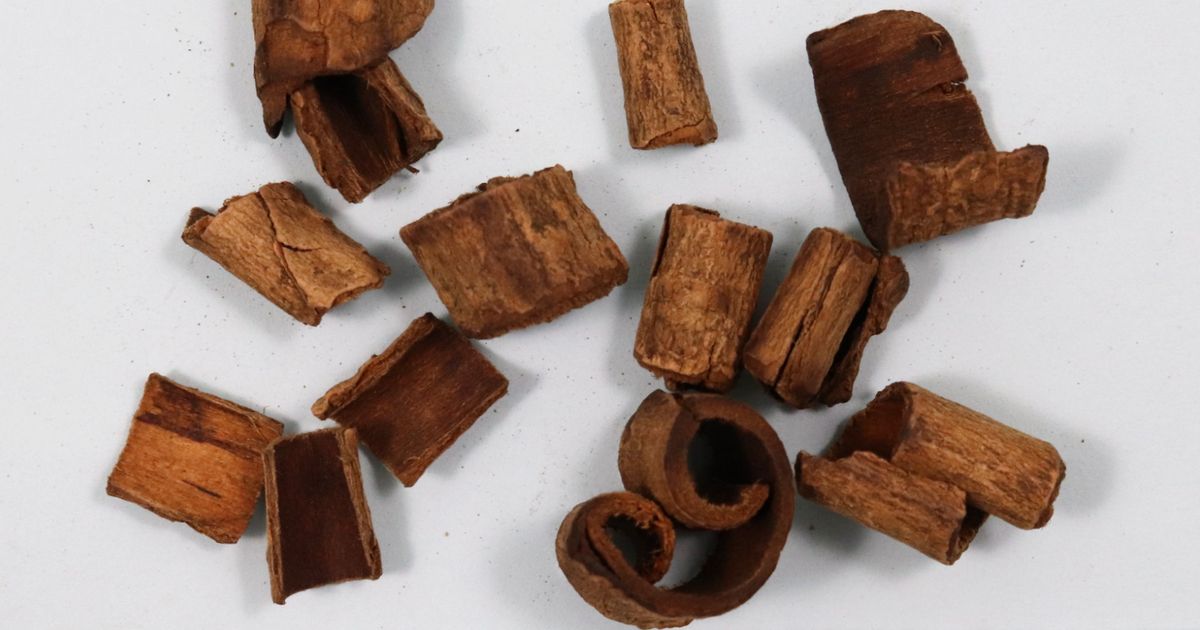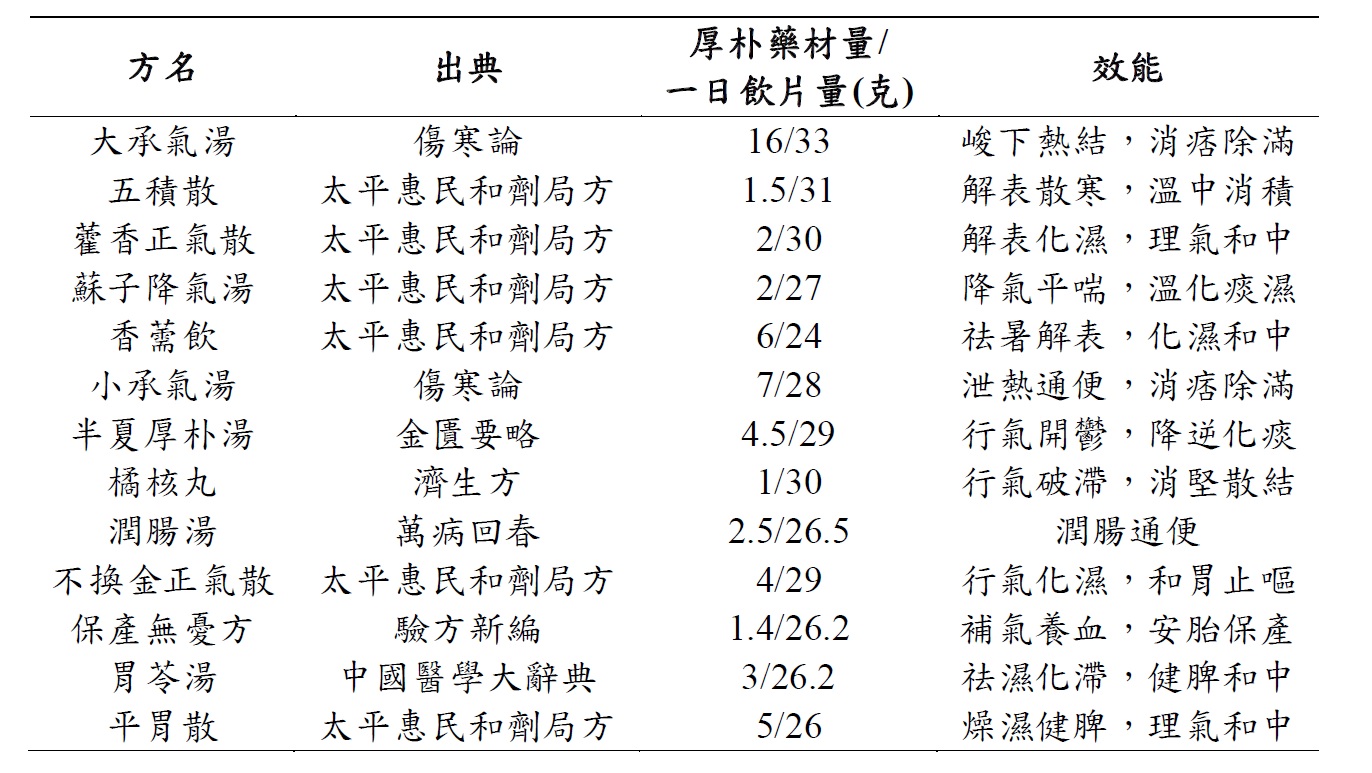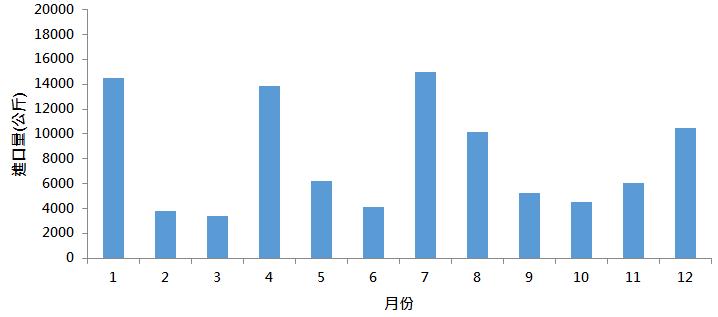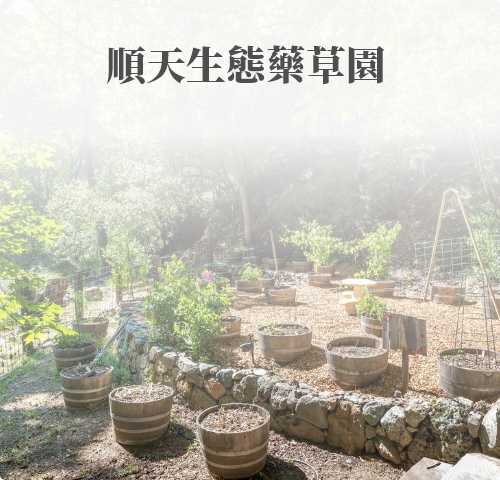厚朴(MAGNOLIAE CORTEX)安全性文獻回顧
2021-09-22
2353


厚朴為木蘭科Magnoliaceae 植物厚朴Magnolia officinalis Rehder et E.H.Wilson 或凹葉厚朴Magnolia officinalis Rehder et E.H.Wilson var. biloba Rehder et E.H.Wilson 之乾燥幹皮、根皮及枝皮。神農本草經將厚朴列為中品,性溫,味苦、辛;具有溫中、下氣及燥濕消痰之功能。主治腹痛脹滿、反胃嘔逆、宿食不消、痰壅喘嗽及濕滿瀉痢等。各國藥典對於厚朴之指標成分含量,大多以厚朴酚(Magnolol)及和厚朴酚(Honokiol)含量進行規範,彙整如下表一。
表一、各國藥典厚朴指標成分含量規範

厚朴常見於治療腸胃道相關疾病,臺灣中藥典收載含厚朴的方劑共13方,彙整如下表二。
表二、臺灣中藥典收載含厚朴之方劑

依據臺灣衛生福利部中醫藥司網站統計資料[1],厚朴於2019年總進口量為97,357.7公斤,每月皆進口至少3000公斤的厚朴藥材(圖一),再次顯示厚朴於臺灣中醫師開立處方之重要性。

圖一、2019年厚朴藥材每月進口量
由上述資料可知,厚朴從東漢傷寒論以來,廣泛用於中藥單方及複方,並無記載相關副作用及毒性資料。然而,於馬來西亞藥品管制局(National Pharmaceutical Regulatory Agency, NPRA)出版的Drug Registration Guidance Document (DRGD)手冊中,卻因厚朴具潛在腎毒性而予以禁用。但有關厚朴藥材之安全性,至今已有數篇相關研究與報導指出,厚朴無明顯毒性,安全性高。依據2007年行政院衛生署中醫藥委員會,「建立厚朴中藥材飲片炮製基準及炮製廠規範」中醫藥年報研究報告(報告編號:CCMP93-RD-070)內容記載[2],以BALB/C雄性小白鼠進行急性毒性試驗,厚朴之半致死劑量(Lethal Dose, 50%)大於10 g/kg,換算為60公斤之人體劑量,則為> 66.7 g/day,其半致死劑量遠大於臺灣中藥典規範厚朴使用量3~11.5 g。Liu等人於2007年之研究結果指出,連續給予Sprague-Dawley雄性與雌性大鼠含有不同劑量(60、120及240 mg/kg bw/day)厚朴乙醇萃取物(含94% Magnolol及1.5% Honokiol)之飼料共13週後,實驗組與對照組(不含厚朴乙醇萃取物)之體重、體重增加量、食物攝取量,肝臟血液指數(Alanine aminotransferase、Aspartate aminotransferase、Total protein、Albumin、Total bilirubin及γ-Glutamyltransferase)、腎臟血液指數(Blood urea nitrogen及Creatinine)及尿液檢驗數值(Specific gravity、Urine calcium、Urine phosphorus、Urine potassium、Urine sodium及Urine chloride)皆無顯著差異,顯示長期服用厚朴具安全性,無顯肝腎著毒性[3]。Li等人於2007之研究結果指出,厚朴乙醇萃取物經Ames test及Micronucleus test評估得知,無顯著致突變性及基因毒性[4],此外,研究指出厚朴乙醇萃取物亦不會造成染色體變異[5]。Kalman等人於臨床試驗研究指出,20歲到50歲的女性受試者,連續服用含厚朴與黃檗(Phellodendron amurense)之萃取物(1:1),連續6週後,無顯著副作用[6]。
世界衛生組織(World Health Organization, WHO)曾收錄有關常用藥用植物之藥理活性及安全性資料,有關厚朴安全性資料節錄如下[7]:
Precautions
- General: No information was found.
- Drug interactions: None reported.
- Drug and laboratory test interactions: None reported.
- Carcinogenesis, mutagenesis: An aqueous extract of the bark was not mutagenic in the Ames test in Salmonella typhimurium strains TA98 and TA100 at concentrations up to 40.0 mg per agar plate.
- Pregnancy: teratogenic effects: None reported.
- Pregnancy: non-teratogenic effects: Due to a lack of safety data the use of the crude drug during pregnancy is not recommended.
- Nursing mothers: Due to a lack of safety data the use of the crude drug during breastfeeding is not recommended.
- Paediatric use: Due to a lack of safety data the use of the crude drug in children under the age of 12 years is not recommended.
- Adverse reactions: No information was found.
此外,依據American Herbal Products Association’s Botanical Safety Handbook記載,厚朴在Safety Class歸類於2b等級(Not to be used during pregnancy)[8],節錄如下:
Safety Class 2b: Not to be used during pregnancy
- Traditional use contraindicates.
- Traditional use as an abortifacient or uterine stimulant.
- Relevant adverse event data in humans exist and have probability of causality.
- Data in animals suggesting teratogenicity or other adverse effects on the fetus or mother, with reasonable application to humans.
- For plants with common food uses, standard dose is in excess of typical food amounts.
綜合以上彙整文獻,厚朴無顯著基因毒性、腎毒性及長期服用毒性,此外,若按照WHO及Botanical Safety Handbook建議,除了懷孕及哺乳婦女,與12歲以下孩童不建議使用厚朴外,於醫師處方下,厚朴可廣泛用於治療腹痛脹滿、反胃嘔逆、宿食不消、痰壅喘嗽及濕滿瀉痢等疾病。
Reference
- https://dep.mohw.gov.tw/docmap/cp-4747-38404-108.html.
- 劉崇喜,建立厚朴中藥材飲片炮製基準及炮製廠規範(CCMP93-RD-070),2007。
- Liu et al. Evaluation of short-term and subchronic toxicity of magnolia bark extract in rats. Regulatory Toxicology and Pharmacology 49, 160-171, 2007.
- Li et al. Evaluation of the in vitro and in vivo genotoxicity of magnolia bark extract. Regulatory Toxicology and Pharmacology 49, 154-159, 2007.
- Zhang et al. Evaluation of magnolia bark extract in chromosomal aberration assays. Mutation Research 654, 133-137, 2008.
- Kalman et al. Effect of a proprietary Magnolia and Phellodendron extract on stress levels in healthy women: a pilot, double-blind, placebo-controlled clinical trial. Nutrition Journal 7, 11, 2008.
- WHO monographs on selected medicinal plants. Volume 4, page 167-178, 2009.
- American Herbal Products Association’s Botanical Safety Handbook. Second edition, page 539-540, 2013.


